2020
|
2020.12.31. PUBLICATION — Bosellini, F., Stolarski, J., Papazzoni,
C.A., Vescogni, A. 2020. Exceptional development of
dissepimental coenosteum in the new Eocene
scleractinian coral genus Nancygyra (Ypresian, Monte
Postale, NE Italy). Bollettino della Società
Paleontologica Italiana 59(3):291-298,
doi:10.4435/BSPI.2020
In colonial corals, the polyps are interconnected
with a common tissue called coenosarc. Polyps and
coenosarc secrete distinct skeletal structures:
corallites and coenosteum, respectively. Ratio of
corallite to coenosteum development may vary
resulting in two extreme architectural patterns of
coral colonies: corallite-dominated (e.g., cerioid)
and coenosteum-dominated (e.g., aphroid) colonies.
In newly described colonial Nancygyra
dissepimentata from Eocene of Italy, the
coenosteum forms ca. 60-80% of the corallum volume
and is made of vesicular convex dissepiments.
Experimental studies show that dissepiments are
rapid growing skeletal elements. Formation of light,
dissepiment-dominated coralla may therefore be an
efficient strategy to compete for space in the warm
and shallow-water reef environment.
|
2020.12.30. PUBLICATION — Machalski, M. 2021.
Correlation of shell and aptychus growth provides
insights into the palaeobiology of a scaphitid
ammonite. Palaeontology, 64, 2,
225-247. doi.org/10.1111/pala.12519
Scaphitids are spectacular group of heteromorph
ammonites with partially uncoiled shell. They rank
among the commonest and best-known Late Cretaceous
ammonites, yet many aspects of their palaeobiology
are still unresolved. For the first time in a
scaphitid ammonite, growth marks are identified on
the moulds and aptychi (calcareous coverings of
jaws) of Hoploscaphites constrictus from
Upper Cretaceous deposits of Poland. Correlation of
these growth marks allowed for reconstruction of
successive stages of shell and aptychus growth and
assessment of the growth rate, age at maturity, and
the function of aptychus in these ammonites. Project
financed by National Centre of Science
(2015/19/B/ST10/02033).
|
2020.12.28. PUBLICATION — Salamon MA,
Ausich WI, Brachaniec T, Płachno BJ, Gorzelak P. 2020. Uncovering
the hidden diversity of Mississippian crinoids
(Crinoidea, Echinodermata) from Poland. PeerJ 8:e10641;
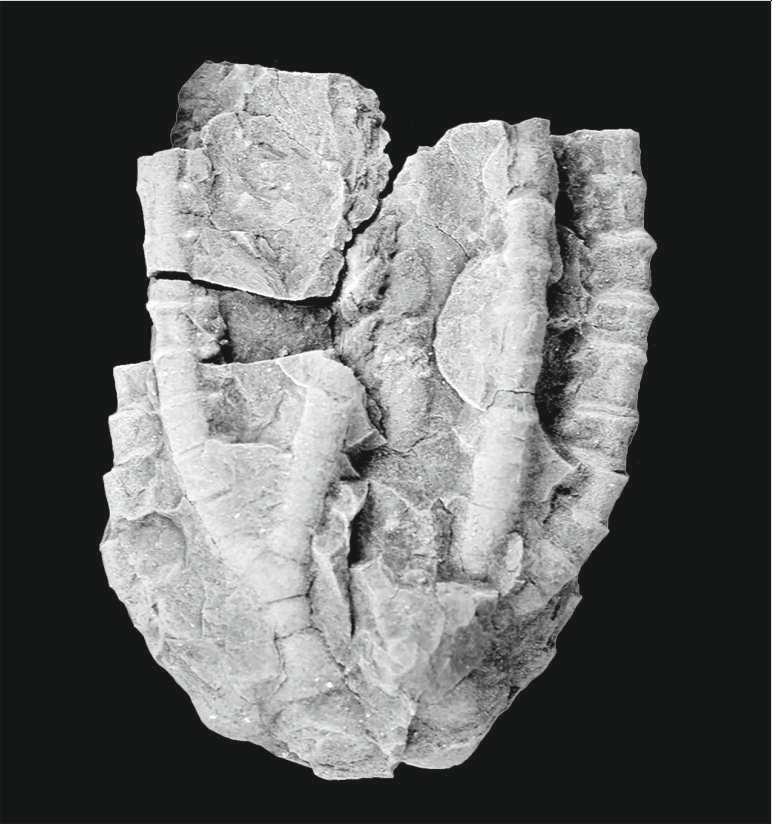 Carboniferous
sea lilies from various parts of Poland (Holy
Cross Mountains, Upper Silesia,
Kraków-Częstochowa Upland) were described. The
fossils found are preserved as fragments of
stems and, what is rare, cups and crowns.
Although an accurate taxonomic determination of
these findings was not possible, these remains
indicate a rich diversity of crinoids in Poland
during the Carboniferous.
|
|
|
|
2020.12.22. PUBLICATION — Heřmanová,
Zuzana, Kvaček, Jiří, Dašková, Jiřina, and Halamski, Adam T. 2020. Plant
reproductive structures and other mesofossils from
Coniacian/Santonian of Lower Silesia, Poland. Palaeontologia Electronica, 23
(3): a61.
This paper is
about mesofossils, that is, fossils too small to
be collected in the field, but too big for
standard micropalaeontological techniques. From
Rakowice Małe and Żeliszów (Lower Silesia,
south-western Poland) a mixed Czech and Polish
team described plant mesofossils: flowers and
fruits of extinct relatives of modern oaks and
walnuts, conifer twigs, and spores (megaspores)
of spikemosses. Fossil insect eggs are also
present. The age of this fossil assemblage is
about 86 million years (Cretaceous,
Coniacian–Santonian boundary).
|
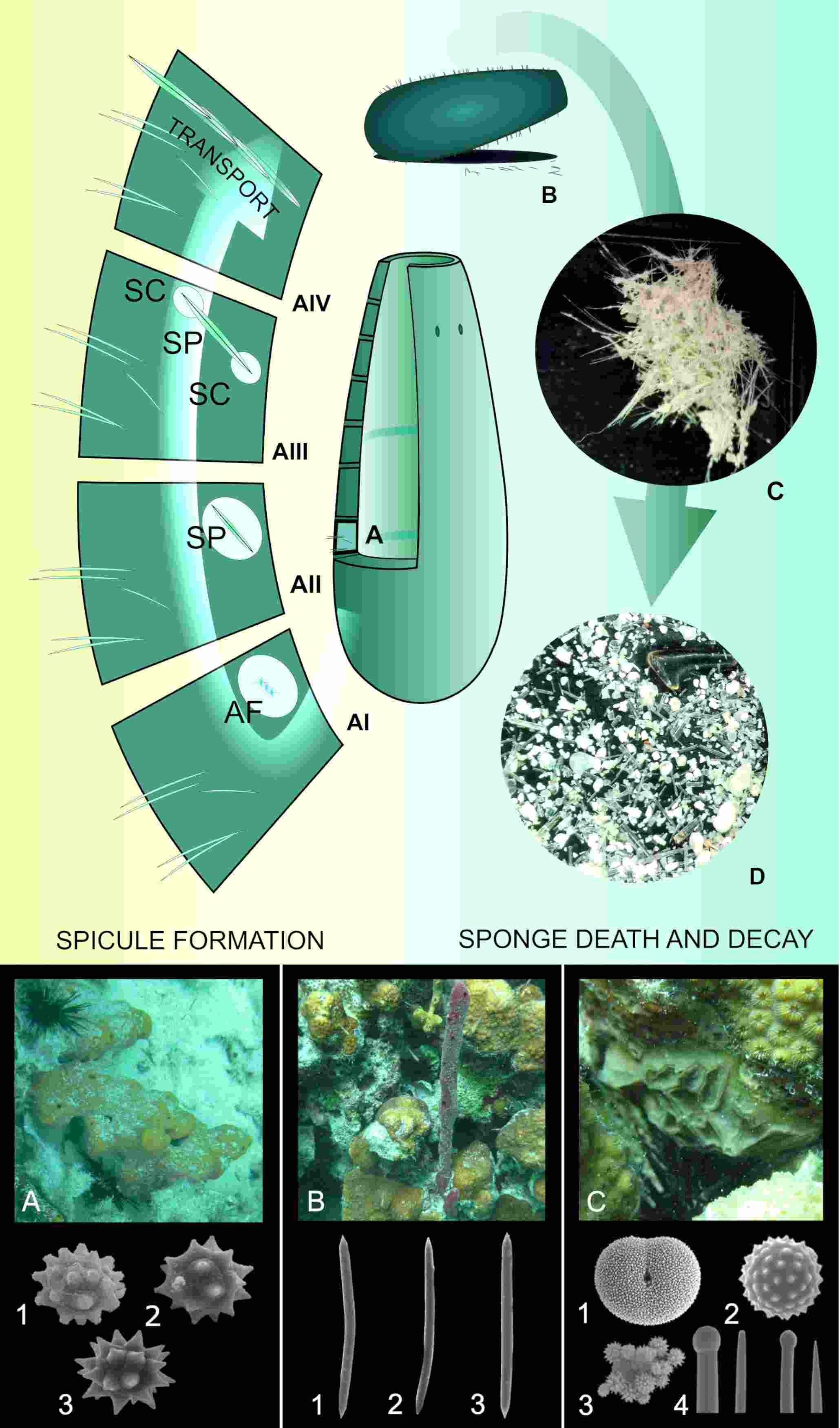
2020.12.21. PUBLICATION — Łukowiak, M. 2020. Utilizing
sponge spicules in taxonomic, ecological and
environmental reconstructions: a review. PeerJ;
Most sponges produce skeletal components termed
spicules that are useful in taxonomic studies.
When sponge die, the spicules become
incorporated in the sediment and their record is
used to reconstruct sponge faunas. Spicules also
provide ecological and environmental
information. Specific requirements of some
sponges can be used to interpret the environment
in which they lived. Silicon isotopes extracted
from spicules, in turn, are used to reconstructs
silicic acid levels of the ancient seas. This
article reviews the use of sponge spicules and
highlights important gaps and their utilization.
|
2020.12.16. PUBLICATION — Stolarski, J., Coronado, I.,
Murphy, J.G., Kitahara, M.V., Janiszewska, K., Mazur, M.,
Gothmann, A.M., Bouvier, A.S., Marin-Carbonne, J.,
Taylor, M.L., Quattrini, A.M., McFadden, C.S.,
Higgins, J.A., Robinson, L.F., Meibom, A. 2020. A
modern scleractinian coral with a two-component
calcite-aragonite skeleton. Proceedings of the National
Academy of Sciences of the United States of
America doi: 10.1073/pnas.2013316117
Until now, all of the ca. 1,800 known modern
scleractinian coral species were thought to produce
skeletons exclusively of aragonite. Asymbiotic Paraconotrochus
antarcticus living in the Southern Ocean is
the first example of an extant scleractinian that
forms a two-component carbonate skeleton, with an
inner structure made of high-Mg calcite and an outer
structure composed of aragonite. This discovery
published in PNAS
adds support to the notion that the coral skeletal
formation process is strongly biologically
controlled. Mitophylogenomic analysis shows that P.
antarcticus represents an ancient scleractinian
clade, suggesting that skeletal mineralogy/polymorph
of a taxon, once established, is a trait conserved
throughout the evolution of that clade.
|
2020.11.30. PUBLICATION — Lukeneder A.,
Surmik D., Gorzelak P.,Niedźwiedzki R.,
Brachaniec T., Salamon M.A., 2020, . Bromalites from
the Upper Triassic Polzberg section (Austria);
insights into trophic interactions and food chains
of the Polzberg palaeobiota. Scientific Reports 10: 20545;
A rich assemblage of various types of bromalites
(the fossilized remains of material sourced from the
digestive system) from the Reingraben Shales in
Polzberg (Northern Calcareous Alps, Austria) is
described for the first time. They comprise
regurgitalites (fossilized oral ejecta) consisting
of numerous fragments of ammonoids, and coprolites
(fossilized feces) composed mainly of tiny fish
remains. The size, shape and co-occurrence with
skeletal remains of vertebrate predators imply that
regurgitalites were likely produced by large
durophagous (shell-crushing) shark Acrodus.
Coprolites, in turn, were likely produced by
medium-sized piscivorous actinopterygians. These
discoveries are consistent with the previous
hypotheses suggesting intense durophagous predation
in the Triassic.
|
2020.11.27. PUBLICATION — Late Cretaceous
mega-, meso-, and microfloras from Lower Silesia Adam T. Halamski, Jiří Kvaček,
Marcela Svobodová, Ewa Durska, and Zuzana Heřmanová Acta Palaeontologica Polonica in
press available online 13 Nov 2020;
 About
90–85 million years ago the present territory of
Europe was mostly covered by sea and land plants
could grow only on islands of the so-called
European Archipelago. This work concerned the
East Sudetic Island (now Lower Silesia,
south-western Poland). Among trees one could
find relatives of modern walnuts, planes, and
bald cypresses as well as representatives of
extinct groups ( Dewalquea). The
understory was dominated by ferns. Sea coast was
covered by mangroves composed of extinct
salt-tolerant conifer Frenelopsis and
probably also the nipa palm (known from today’s
flora).
|
2020.11.27. PUBLICATION — Szczygielski, T. 2020. Obscure
by name: solving the enigma of Chelytherium
obscurum, the first described Triassic turtle.
Zoological Journal of the Linnean
Society, advance online, 1–12.;
A mystery of the first Triassic turtle solved
Chelytherium obscurum from Germany, described
in 1863, was the first Triassic turtle discovered.
Despite its irrefutable historic importance,
virtually since its establishment this species was
treated as problematic and uncertain, misunderstood,
and eventually forgotten. The only graphical
representation of this enigmatic material was
published in 1865 as idealized pencil drawings,
hampering its reliable interpretation for over 150
years. Thanks to the recent revision of all the
material by dr. Tomasz Szczygielski from the
Institute of Paleobiology, PAS, Chelytherium
obscurum was found to be synonymous with
another Triassic turtle from Germany – Proterochersis
robusta, described in 1913 and closely related
to Proterochersis porebensis from Poland.
This means that this species is not only among the
most ancient geologically and most primitive turtles
known to science, but also is historically the
oldest known representative of the group from that
time interval. This conclusion, however, brings
another problem: according to the universal naming
rules used in science, the older name should be
considered valid and the younger name should be
abandoned. In the case of Chelytherium and Proterochersis,
this is undesirable because of the troubled history
of the former and a much larger prevalence of the
latter name in the scientific literature. To solve
this problem, a ruling by the International
Commission on Zoological Nomenclature is necessary,
which will validate the exception from the priority.
The case is already registered for ruling, and the
matter should be resolved within a year.
|
2020.11.27. PUBLICATION — Seiblitz,
I.G.L., Capel, K. C. C., Stolarski, J., Quek, Z. B. R.,
Huang, D., Kitahara, M. V. 2020. The earliest
diverging family within extant scleractinian corals
recovered by mitochondrial genomes. Scientific Reports 10:20714;
The earliest evolutionary history of Scleractinia
corals is shrouded in mystery. The mass appearance
of Scleractinia in the fossil record, ca. 240
million years ago (in the Triassic) is marked by
their astonishingly large taxonomic diversity that
suggests their much deeper Paleozoic evolutionary
roots. Modern gardineriids and micrabaciids
represent the oldest evolutionary lineages of
corals, and molecular data suggest their early
Paleozoic divergence (about 425 million years ago).
To date, these two groups were considered closely
related, although the microstructure and macroscopic
features of their skeletons were radically
different. Based on all mitochondrial genes, the
phylogeny published in the paper suggests that the
micrabaciids were the first to diverge, being a
sister group to all other scleractinians, including
gardineriids. Although accurate calibration of the
molecular tree is not possible now (complete
mitogenomes of several important scleractinian grous
are missing), the anatomical features of micrabaciid
polyps suggest a close relationship with
skeletonless corals (Corallimorpharia). Thus, it
cannot be ruled out that micrabaciids have the most
ancient biomineralization toolkit among
Scleractinia.
|
2020.11.27. PUBLICATION — Fostowicz-Frelik Ł., Li, Q., Saha, A.. 2020. A gliriform
tooth from the Eocene of the Erlian Basin (Nei
Mongol, China) and the premolar morphology of
anagalidan mammals at a crossroads. Diversity 12, 420;
The middle Eocene in Nei Mongol (China) was an
interval of changes in mammalian fauna. A major
diversification of rodents and small-sized
lagomorphs occured at that time, along with the
decline of mimotonids (Gomphos and Mimolagus)
and anagalids. The latter was an enigmatic group of
basal Euarchontoglires endemic to China and
Mongolia. Here, we describe the first anagalid tooth
(a P4) from the Huheboerhe classic site in the
Erlian Basin. The tooth is characterized by its
unique morphology intermediate between mimotonids
and anagalids. This discovery is important because
it demonstrates the convergent adaptations in
anagalids, possibly of ecological significance.
|
2019
|
2019.07.01. PUBLICATION —
Coronado,
I., Fine, M., Bosellini, F.R., Stolarski,
J. 2019. Impact of ocean acidification on
crystallographic vital effect of the coral
skeleton. Nature
Communications 10:2896
Marine invertebrates such 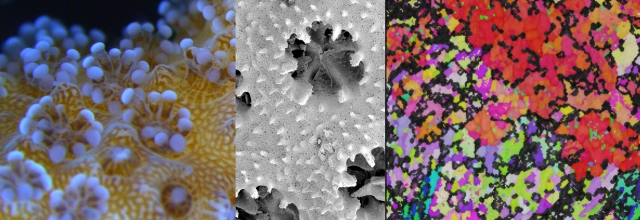 as
corals build their skeletons in process known as
biologically controlled mineralization. Crystals
deposited by these organisms record valuable
environmental information which can be used to
reconstruct conditions in the marine realm.
Sometimes biological processes in the calcifying
organism override the environmental signal, a
phenomenon known as vital effect. In Coronado et
al. 2019 paper, calcium carbonate skeleton of the
reef-building coral Stylophora pistillata
was examined following incubation in controlled
conditions. Corals were grown in an aquaria system
at the Interuniversity Institute for Marine
Science in Eilat at treatments ranging from
ambient ph 8.2 down to a pH of 7.3. For the first
time the skeleton was assessed at crystallographic
scale. Those formed under lower pH show systematic
changes in the arrangement of skeletal crystals
and distortions at atomic scale, related to
altered physiology. Furthermore, it was found that
under more acidic conditions, there is higher
incorporation of organic matrix in the skeleton. A
parameters called Crystallographic Vital Effect,
show a linear correlation with the seawater pH
making them a novel tool for reconstructing past
ocean acidification conditions. |
2019.06.21. On June 24th, 2019 Maciej
Pindakiewicz (PhD student Institute of
Paleobiology) will present a lecture Feeding
convergence among extinct and extant
ray-finned fishes – teeth of the herbivorous
actinopterygians from the latest Permian of
EastEuropean Platform.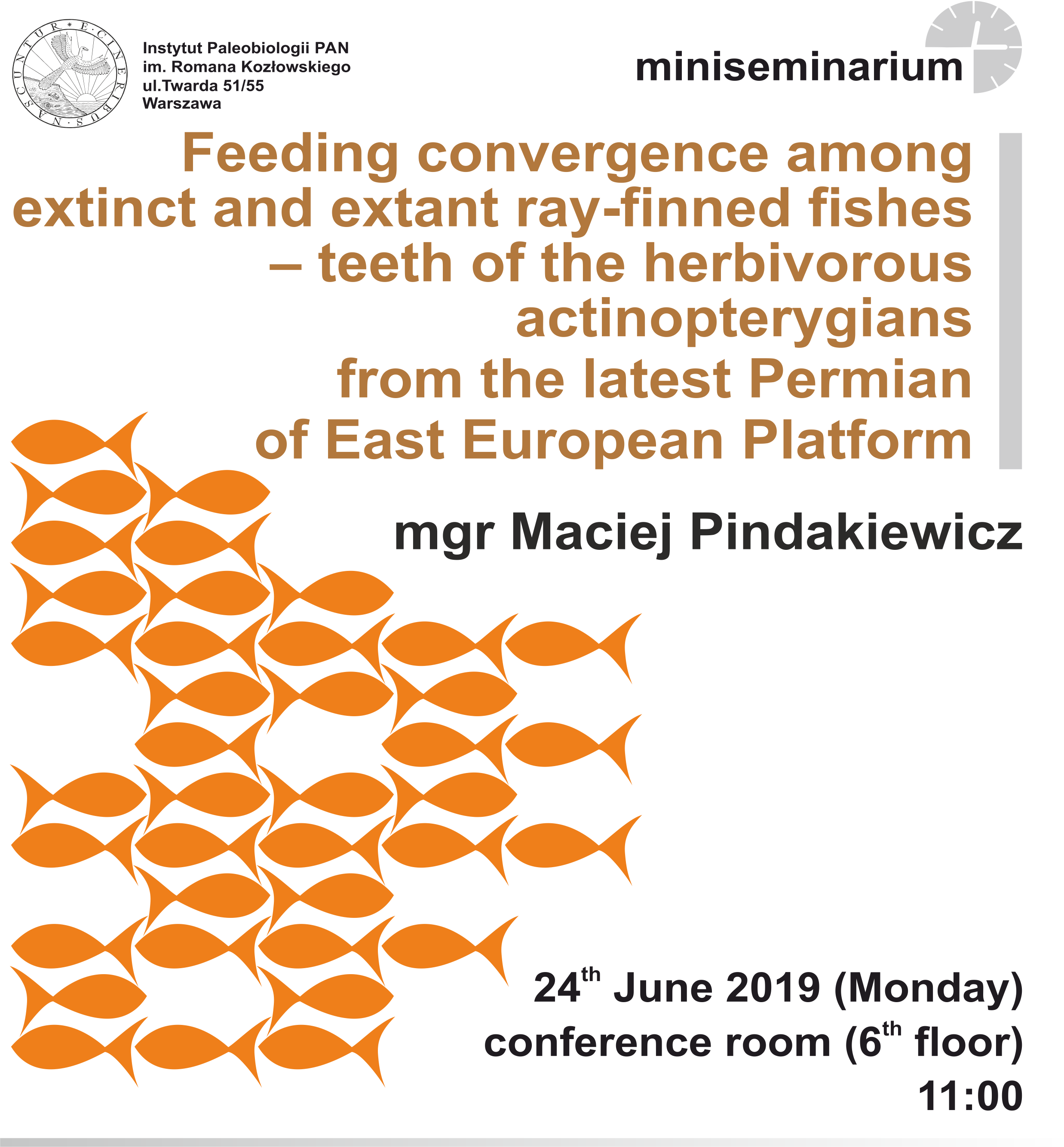
|
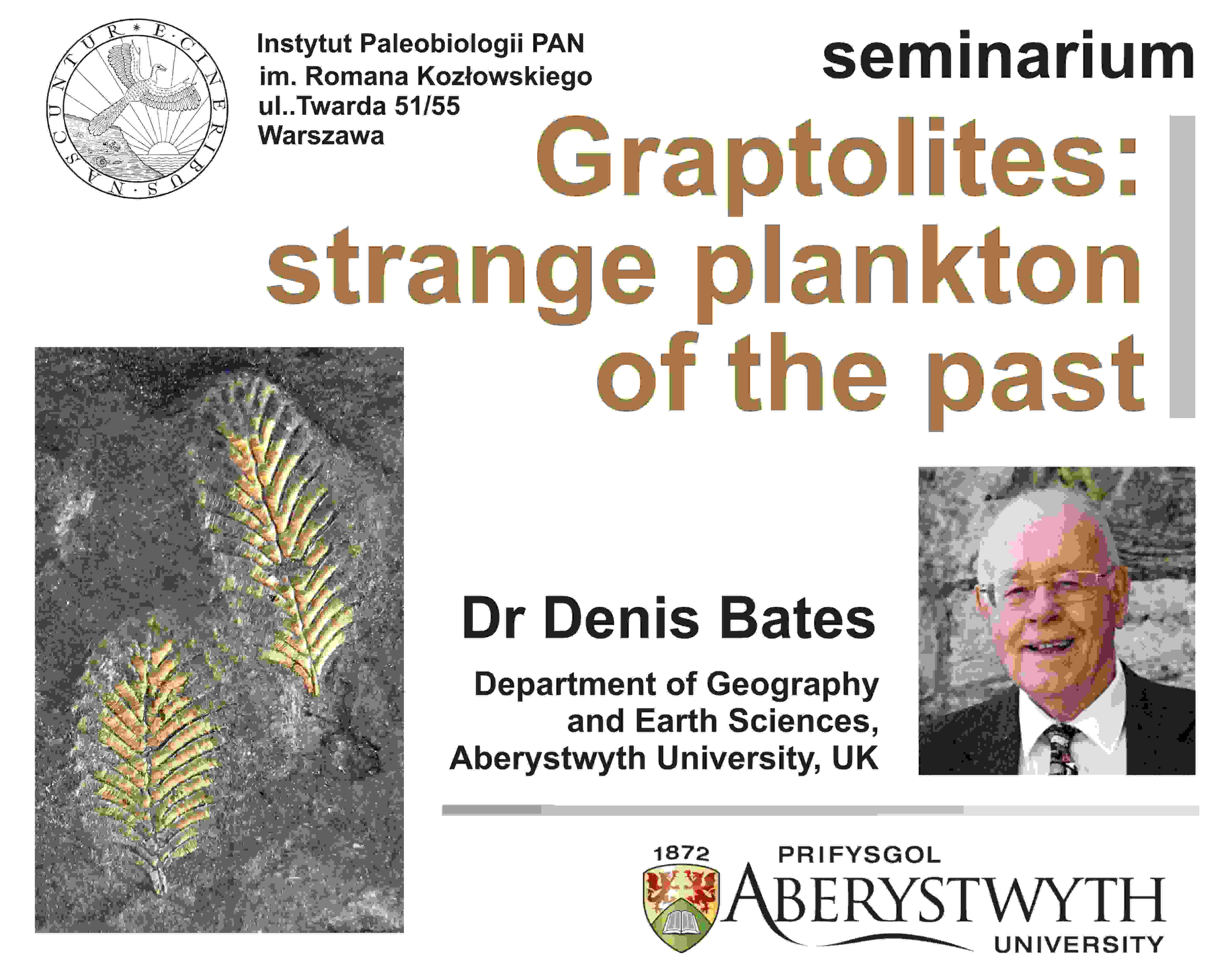 2019.05.10.
On May 13th, 2019 dr Denis Bates (Aberystwyth
University) will present a lecture Graptolites:
strange plankton of the past. 2019.05.10.
On May 13th, 2019 dr Denis Bates (Aberystwyth
University) will present a lecture Graptolites:
strange plankton of the past. |
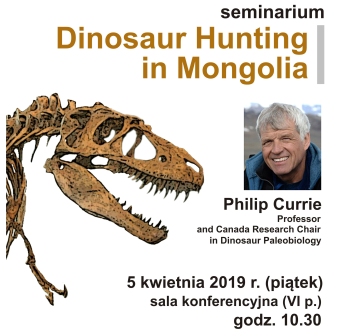 2019.04.04.
On April 5th, 2019 professor Philip Currie (Canada
Research Chair in Paleobiology) will present a
lecture Dinosaur Hunting in Mongolia. 2019.04.04.
On April 5th, 2019 professor Philip Currie (Canada
Research Chair in Paleobiology) will present a
lecture Dinosaur Hunting in Mongolia. |
|





